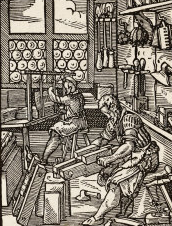Seeing Through the Blank Screen in The Silence
Abstract
By analyzing Don DeLillo’s latest novel, The Silence, this paper argues that the blank screen stands as an intermediary that shapes human beings’ sense of identity within contemporary technological culture. The screen becomes a candidate for thinking through the present on account of the dual status it acquires: that of a hyponym of technology, and simultaneously the status of a physical object which plays a crucial role in organizing and determining human lives. This article sets out to show how the dysfunctional nature of the screen makes it more conspicuous in the physical space and consequently endows it with new characteristics and qualities which draw attention not so much to its functions as to the way in which its very presence alters human interactions. This condition shifts the focus from functionality to ontology. In the narrative space the object becomes an agent that reshapes behavior and adjusts human ends to match the character of technological means. The blank screen certainly works as a catalyst for speech, albeit one that creates gaps and blanks further isolating the characters. Language may fail to forge human identities in the sensible space that the characters inhabit, but the narrative still has the ability to redeem the credibility of language through the moments of silence it creates, which are conducive to acts of listening on the reader’s part.
Keywords: hybridity, object, relational ontology, screen, silence, subject, technology
Downloads
Published
Issue
Section
License
- Work submitted for publication must be original, previously unpublished, and not under consideration for publication elsewhere. If previously published figures, tables, or parts of text are to be included, the copyright-holder's permission must have been obtained prior to submission.
- Authors of accepted manuscripts will assign to L'Atelier the right to electronically distribute their article, or publish it in any form (Internet, CD ROM, printed copy) but authors will retain copyright and, after the article has appeared in L'Atelier, authors may republish their text (in print and/or electronic form) as long as they clearly acknowledge L'Atelier as the original publisher.


